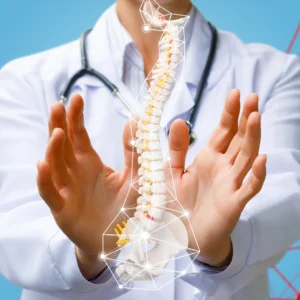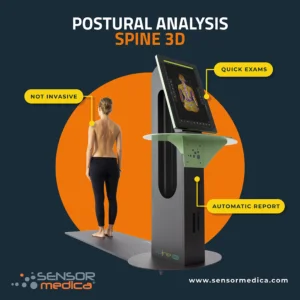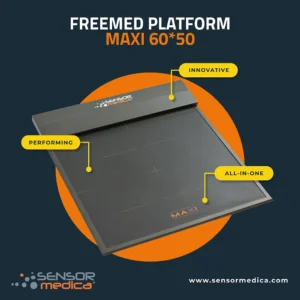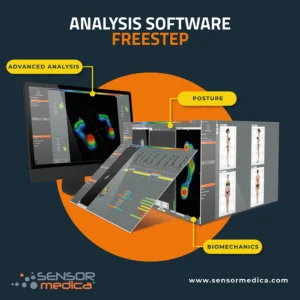
- 09/06/2023
Just this week an interesting research has been published following a study on adolescent idiopathic scoliosis (AIS), a study that used, throughout the analysis phase, the non-invasive Spine 3d detection instrumentation together with the FreeMed baropodometric platform and the FreeStep software, produced by Sensor Medica. The aim of the research was to demonstrate how self-correction exercises can be really effective, especially if monitored with non-invasive instruments supporting the physiotherapist. The article was published in Sensors, one of the world’s leading journals in the field.
Some information on adolescent idiopathic scoliosis

Adolescent idiopathic scoliosis is defined as a three-dimensional deformity of the spine and trunk with a predominance of lateral deviation over other planes of movement. It has been shown to have a higher incidence in girls.
In order to best manage scoliosis, the most common and certainly the preferred approach is based on specific physiotherapy exercises that can limit the progression of the curve with non-invasive procedures.

There are many methods and types of exercises for treating AIS, but most are based on strengthening and stretching the affected muscle groups. Others are based on self-correction in the three planes (frontal, horizontal and sagittal). In any case, we are talking about exercises that need to be supervised by a physiotherapist because the self-correction movements (SCM) must be accurate and targeted in order to effectively reduce the scoliotic curve.
What are the main consequences of scoliosis?
When we talk about scoliosis we need to realize that the problem is reflected in several physical aspects. Scoliosis alters and reduces postural control and personal motor control. Poor segmental body alignment caused by AIS has been associated with an increased lateral displacement of the body’s center of mass, affecting dynamic balance while walking.
With Spine 3D there is a possibility of non-invasive control
In paediatrics, two-dimensional (2D) radiography is used for initial diagnosis and longitudinal surveillance. But we know that frequent radiological evaluations during growth can lead to negative effects in the long term. This is why radiation-free measurement methods are increasingly being used to reduce the possible health risks caused by repeated exposure to X-rays.

Today, thanks to LiDAR technology and Spine 3D, we can reproduce images of the spine on a monitor using an infrared camera (called ToF, short for Time of Flight). A scanning method without markers and without radiation. And above all, therefore, non-invasive. Among other things, it does not require the room to be dark for image acquisition, allowing multiple images of the spine to be acquired with a three-dimensional model of the spine and pelvis at different angles.
As mentioned in the introduction, our FreeMed baropodometric platform was used to assess center of pressure (COP) oscillation, and data were processed by the associated FreeStep software, which provides real-time indication of individual foot pressure and total load.
The results of the study
Using the Sensor Medica tools, the researchers (in this case, the study is not exhaustive, as it only examined girls and not all types of scoliosis) were able to conclude that self-correcting physiotherapy treatments definitely lead to a reduction in VLD (Vertebral Lateral Deviation). The physiotherapist, who usually acted by “sight”, with a margin of interpretation, was able to assess the changes live while performing the exercises. And all this, it should be noted, with a non-invasive treatment of adolescent idiopathic scoliosis.

SCM can objectively help to improve the curve of the spine. New technologies help frequent, real-time monitoring of curve progression and self-correction of posture. In addition to this, the therapist could improve the methodology of exercise prescription with immediate and objective feedback.
You can read the full article: Acute effects of self-correction on spine deviation and balance in adolescent girls with idiopathic scoliosis.
Below are the research credits:
Marin L., Lovecchio N., Pedrotti L., Manzoni F., Febbi M., Albanese I., Patanè P., Carnevale Pellino V., Vandoni M.
Acute effects of self-Correction on Spine Deviation and Balance in Adolescent Girls with Idiopathic Scoliosis. Sensors. 2022; 22(5):1883.